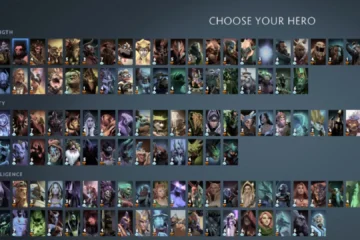In recent years, the perception of video games has undergone a remarkable transformation. Once considered mere sources of entertainment, video games are now recognized for their educational potential, especially when it comes to studying. This paradigm shift has given rise to the exploration of innovative ways to incorporate video games into educational settings. In this article, we delve into the reasons why video games are good for study, with a focus on fun games to play at school on the computer.
The Cognitive Benefits of Video Games
1. Enhanced Problem-Solving Skills
Video games often present players with complex challenges that require critical thinking and strategic planning. Players must navigate through intricate levels, solve puzzles, and make quick decisions, all of which contribute to the development of problem-solving skills. These cognitive abilities are transferable to academic settings, where students frequently encounter complex problems that demand analytical thinking.
2. Improved Concentration and Attention Span
Successful gameplay requires sustained focus and concentration. Players must pay attention to details, react quickly to changing scenarios, and maintain awareness of their surroundings. These skills can be invaluable for students who need to concentrate during lectures, study sessions, or exams.
Video Games and Educational Content
3. Incorporating Educational Material into Games
To further leverage the educational potential of video games, developers and educators have collaborated to create games that seamlessly integrate educational content. These games are designed to align with academic curricula, covering subjects such as mathematics, science, history, and language arts. By combining learning objectives with engaging gameplay, these educational games make studying enjoyable and effective.
4. Subject-Specific Learning Games
Educational games come in various forms, including subject-specific learning games. For example, math games can help students practice arithmetic and problem-solving, while language arts games can enhance vocabulary and grammar skills. These games provide a dynamic and interactive approach to learning, making the educational experience more enjoyable.
Video Games in the Classroom
5. Interactive Learning Environments
Integrating video games into the classroom creates interactive learning environments that cater to diverse learning styles. Some students may excel in traditional teaching methods, while others may benefit more from hands-on, interactive experiences. Video games provide a medium that caters to the latter group, offering a unique and engaging way to absorb and apply information.
6. Promoting Collaborative Learning
Many video games encourage collaboration and teamwork, fostering a sense of community among players. When incorporated into the classroom, these games promote collaborative learning experiences. Students can work together to solve problems, share knowledge, and collectively achieve goals, enhancing their interpersonal skills.
Also Check – Best Work From Home Computers
Fun Games to Play at School on the Computer
7. Minecraft: Education Edition
Minecraft, a popular sandbox game, has an education-focused version known as Minecraft: Education Edition. This game allows students to engage in collaborative building projects, fostering creativity and teamwork. Educators can use Minecraft to teach subjects such as history, geography, and even coding, making it a versatile tool for various disciplines.
8. Kahoot!
Kahoot! is an interactive quiz platform that turns learning into a game. Teachers can create custom quizzes to assess students’ understanding of different subjects. The competitive and engaging nature of Kahoot! makes it an effective tool for reviewing material and reinforcing key concepts in a fun and interactive way.
9. CodeCombat
For students interested in coding and programming, CodeCombat offers an entertaining learning experience. This game teaches coding concepts through interactive challenges and quests. By combining education with gameplay, CodeCombat makes coding accessible and enjoyable for students, helping them develop valuable programming skills.
Addressing Concerns and Setting Boundaries
While the educational benefits of video games are clear, it is essential to address concerns related to screen time and potential distractions. Educators and parents should work together to establish reasonable limits on gaming time, ensuring a balanced approach that incorporates various learning methods.
10. Setting Screen Time Limits
To prevent excessive screen time, educators can establish clear guidelines for when and how video games are incorporated into the curriculum. This ensures that gaming complements traditional teaching methods rather than replacing them.
11. Monitoring Content Appropriateness
It is crucial to monitor the content of educational games to ensure that it aligns with the curriculum and age-appropriateness standards. This proactive approach helps maintain a safe and constructive learning environment for students.
Conclusion
In conclusion, video games have proven to be valuable tools for enhancing the learning experience. The cognitive benefits, integration of educational content, and interactive nature of video games make them effective tools for both in-class and at-home learning. By embracing fun games to play at school on the computer, educators can tap into the potential of video games to make studying enjoyable and enriching for students. As technology continues to evolve, the role of video games in education is likely to expand, offering new and exciting possibilities for innovative and effective learning experiences.



